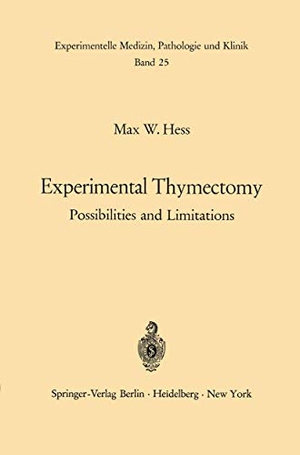Für statistische Zwecke und um bestmögliche Funktionalität zu bieten, speichert diese Website Cookies auf Ihrem Gerät. Das Speichern von Cookies kann in den Browser-Einstellungen deaktiviert werden. Wenn Sie die Website weiter nutzen, stimmen Sie der Verwendung von Cookies zu.
Cookie akzeptieren
- Springer Berlin Heidelberg
- 2012
- Taschenbuch
- 116 Seiten
- ISBN 9783642866760
Since the interest on the thymus as an organ essential for the development of immunological capacity was renewed more than ten years ago, the search for a better understanding of the mecha nisms underlying its functions has not come to an end. Although the first observations suggesting a link between the thymus and immunocompetence related to certain clinical disorders in man such as thymoma or Swiss type of agammaglobulinemia, the bulk of evidence demonstrating the role of this lymphoepithelial organ in immune reactivity originates from experimental work as ini tiated by Dr. MILLER and Dr. Goon's group. The full significance of the thymic system is now
Mehr
Weniger
zzgl. Versand
in Kürze